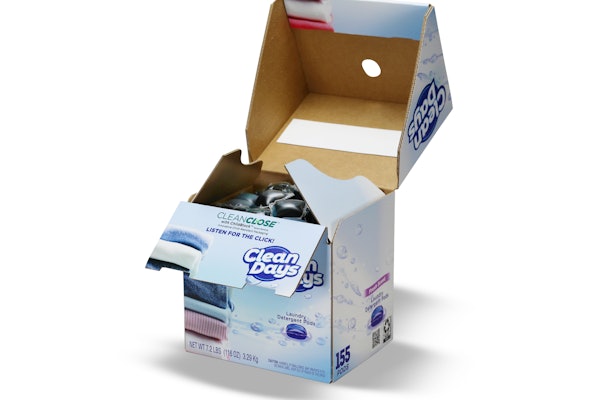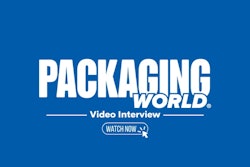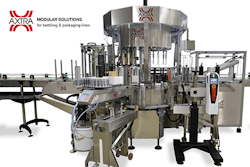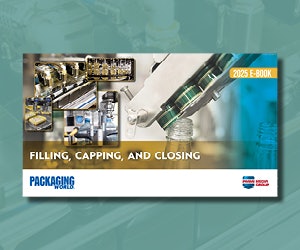Welcome to Sustainable Packaging Explained — your guide to sustainable materials, methods, and package design, produced by the Emerging Brands Alliance in conjunction with Packaging World.
In this episode we’re exploring how to reduce packaging materials by methods such as lightweighting. Lightweighting means to reduce the weight or thickness of materials used in the product’s primary packaging.
Packaging sustainability is an increasingly important issue in the world today. To reduce the negative impact of packaging waste, or to make shipping more efficient, companies are turning to lightweighting their packaging to reduce the amount of material needed for a given product.
The primary reasons for lightweighting include material cost savings, lower shipping costs due to reduced weight, increased shelf space efficiency due to smaller package sizes, and reduction in landfill waste due to fewer materials being used.
There are several methods that can be used when trying to minimize environmental footprint through lightweighting. One of these is to reduce the overall package size, if possible. By simply decreasing the size of the package, the amount of material needed to create the package is also reduced.
This can be done by changing the package format, or utilizing lighter material or thinner films -which may also offer improved flexibility or a more sustainable distribution footprint over thicker films, glass, or boxes. Utilizing optimal fill levels and adjusting how much product is placed within a given package can also help reduce dead space between products and consequently decrease the overall bulkiness of each item, leading to lower transportation costs.
Matt Reynolds:
Now, lightweighting and material reduction are considered paths of little or often least resistance when looking to improve a package’s sustainability profile. When brands and CPGs started paying closer attention to sustainability measures and goals, some as long as two decades ago, this practice was often one of the first that they employed, because back then the concept of going green to make green was thrown around as just good business sense.
That's because lightweighting and material reduction in packaging didn't only mean a better CO2 footprint or less plastic being used. That also meant that CPGs had less total material to pay for, and shipping of smaller, lighter weight products was cheaper. That's why most big brands that can do lightweighting in their packaging have done so already.
And as they launch new products, they have this in mind, doing upfront R&D to optimize new package designs, to use as little material as possible and make it as lightweight as possible while still accomplishing its primary task of protecting the product until it's ready to be used and delivering it to consumers intact. For emerging brands, it might be best to bake this kind of optimization into your first iterations of packaging, rather than having to redesign and adjust until you get to where you want to be on weight and material usage.
Another way to reduce packaging materials is to increase efficiency through automation. Automation has enabled new ways to optimize production processes resulting in more efficient use of resources during manufacturing and filling operations, without sacrificing product quality or safety standards. Automation solutions utilize sensors, cameras, and robotic systems to analyze, collect, and adjust parameters in real-time, in order to reduce the total weight of a package without compromising the quality or safety of the product. This can lead to fewer raw materials needed for manufacturing, less waste, and the detection of potential flaws on products prior to packing which further helps reduce waste.
Matt Reynolds:
Now like anything else in packaging material selection, lightweighting is ultimately about making trade-offs. To achieve the lightest weight package using the least amount of material possible, it's likely that you're going to have to sacrifice features like rigidity, robustness, and machineability.
Two areas to pay close attention to are in packaging automation and in supply chains. There's no doubt that a CPG could arrive at a fully minimalist package that under perfect conditions is likely to perform its primary task of getting product to consumers intact. But on the supply chain side, perhaps this means more leakers, more breakage, more spoilage.
What amount of supply chain scrap is acceptable to you? How much is preventable by more robust packaging? Each brand is going to have to calibrate that balance for itself. But remember, the most expensive product is wasted product with failed packaging in the last mile. After all that value has been added to it, along its supply chain journey.
And on the packaging automation side, lightweighting and material reduction could mean more equipment jams in handling bottles or containers that are less rigid than their predecessors. Or tearing or puncturing of thinner, lighter weight film pouches or wraps. Packaging equipment installations often represent a big chunk of a brand's overall capital investment, and this automation is meant to last for decades.
Packaging materials are changed so that it no longer easily runs on that equipment, that could mean a range of negative consequences from dealing with frequent downtime and scrap to potentially expensive retrofits or worst of all equipment obsolescence. Now, none of this is to say that lightweighting shouldn't be done, quite the opposite.
Makes a ton of sense to do so, but just keep those trade-offs in mind and build a little bit of slack or buffer into your packaging design to optimize packaging systems overall with consideration for more than just a sustainability profile, but also practical supply chain requirements and automation.
By utilizing techniques such as lightweighting, reduced package weight or sizes, or automation to prevent waste, companies can improve sustainability efforts while also reducing material and transportation costs. However, it is important to also be aware that while lighter packaging may result in lower shipping costs, it may be more prone to damage during transit, potentially leading to product damage and ultimately lost sales. As always, it is best to perform a life-cycle analysis of a product to determine which will be the most sustainable option for the situation.
Thanks for watching and be sure to subscribe to our YouTube channel for more videos on packaging and scaling operations. And join us at the Emerging Brands Alliance for year-round resources to grow your brand.



























